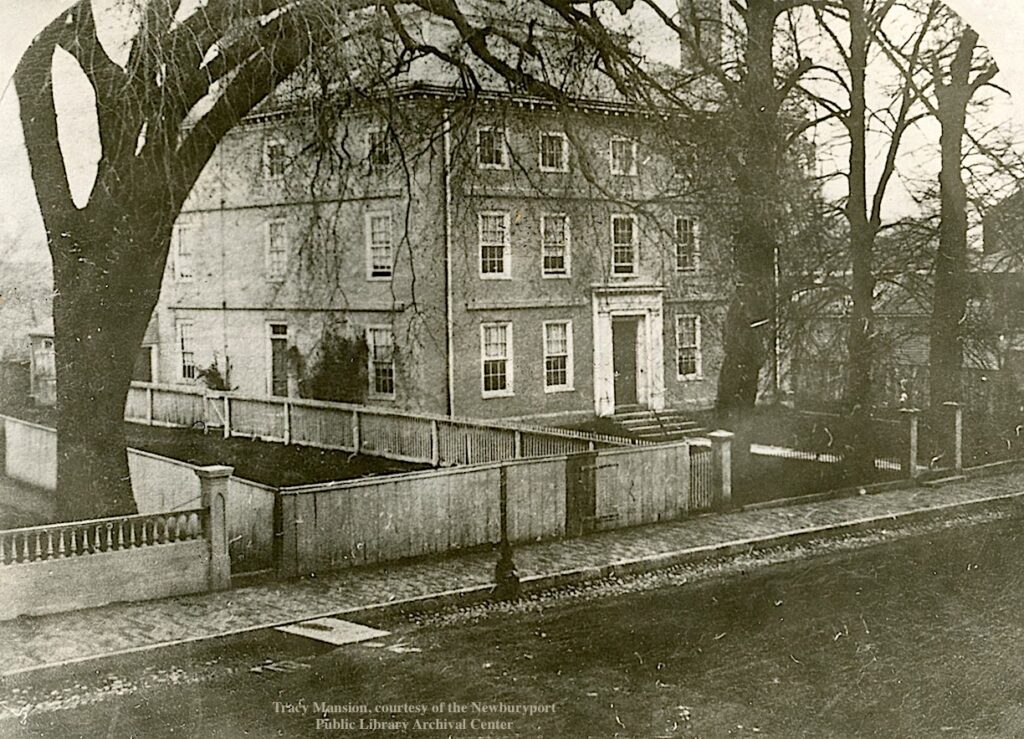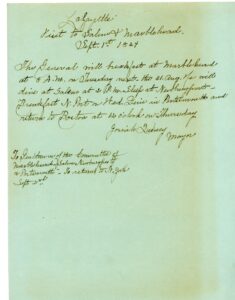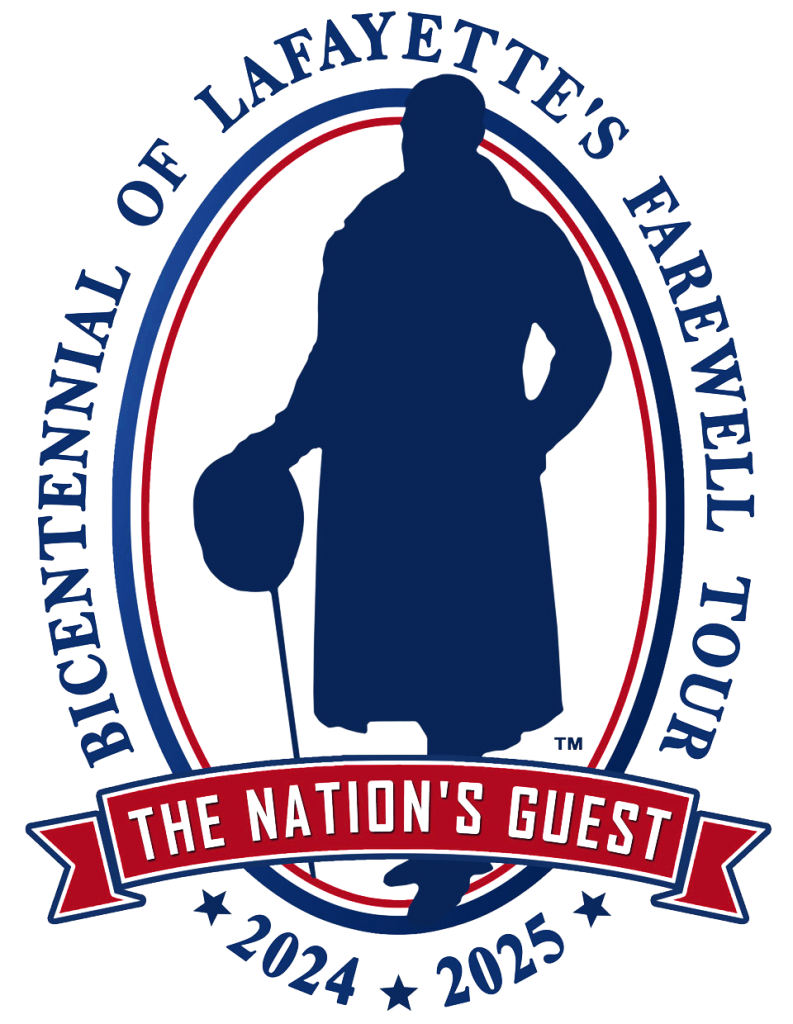This is part of a series on Lafayette’s visit to Massachusetts August 23, 1824 to September 3 1824.
A pealing of cannon, the display of rockets and ringing of bells announced Lafayette’s approach. All houses throughout the length of State Street and High Street to the opening of State Street were illuminated. There were mottos decorating the windows. An arch across State Street read “THE HERO OF TWO CONTINENTS”
Thousands of spectators assembled in spite of the unfavorable weather. The General arrived at the house of James Prince Esq where he was lodging. The home known as Tracy’s Inn had been where George Washington stayed in 1789 and it had been preserved since that time with great care. Lafayette got to sleep in the same bed that Washington had slept in 35 years before.

Hon E. Mosley greeted him:
“General La Fayette:
The citizens of Newburyport are happy in this opportunity of greeting, with the warmest welcome, a distinguished Benefactor of their country.
The important services which you rendered this people in the day of their distress; the devotedness which you manifested in their perilous cause, and the dangers which you sought for their relief; are incorporated in our history and firmly engraven upon our hearts.
We would lead you to our Institutions of learning, charity, and religion; we would point you to our hills and vallies, covered with flocks and smiling in abundance; that you may behold the happy effects of those principles of liberty, which you were so instrumental in establishing.
Our children cluster about you to receive a Patriot’s blessing. Our citizens press forward to shew their gratitude. Our nation pays you a tribute, which must remove the reproach, that republics are ungrateful.
As the zealous advocate for civil liberty, we give you welcome; – as the brave defender of an oppressed people, we make you welcome;-as the friend and associate of our immortal Washington, we bid you welcome!”
Lafayette made a brief glowing reply.
There was a large crowd pressing outside, so a window of the apartment was thrown open and he presented himself. Everyone hoped to grasp his hand. Lafayette expressed sorrow that any should be exposed for his sake to the dampness of the evening. Supper was provided by Mr. Stetson to Lafayette and his suite, the Committee of Arrangements consisting of Ebeneezer Wheelwright, Ebenezer Moseley, Anthony Smith, William Davis, Phillip Coombs, William Bartlett, Samuel S. Wilde, William Cross, Josiah Smith, Thomas M. Clark, Joshua Greenleaf, John Coffin, Abraham Williams, John Merrill and Caleb Cushing. The clergy of the town also dined as did the Marshalls of the day Capt E. Bartlett, Major Perkins, Major Emory, John Scott, George Cross, Nathaniel Foster and Nathan Brown.
Due to continuing bad weather there was no procession formed on the morning of September 1.
After receiving people seeking an introduction Lafayette entered a carriage and set out for Portsmouth. Cavalry, light infantry and artillery escorted him a short distance. The committee of arrangements and marshals accompanied him to Leavitt’s tavern in Hampton.
Other Notes
Lafayette greeted many veterans while in Newburyport. He was particularly moved when Daniel Foster came up to him. Foster had been in Lafayette’s Light Infantry and showed Lafayette the sword that he had provided to him along with the other NCOs and officers. Lafayette assured Foster that he looked upon him “as one of his own family”.
Some of the planning that went into the tour is illustrated by this note from Mayor Quincy of Boston from the collection of the Marblehead Museum.

Among the townspeople standing in the pouring rain waiting for a chance to shake hands with Lafayette was a young man of 18 who had not yet found his path. He thought about going to Greece to fight for their freedom or perhaps seeking an appointment to West Point. William Lloyd Garrison (1805-1879) would find his calling before the age of thirty when he started the newspaper The Liberator in 1831. He was one of the founders of the American Anti-Slavery Society. Garrison is probably the most well known white abolitionist.

———————————————————————————————————————————————————-
For information on the bicentennial of Lafayette’s tour check out lafayette200.org.































































































